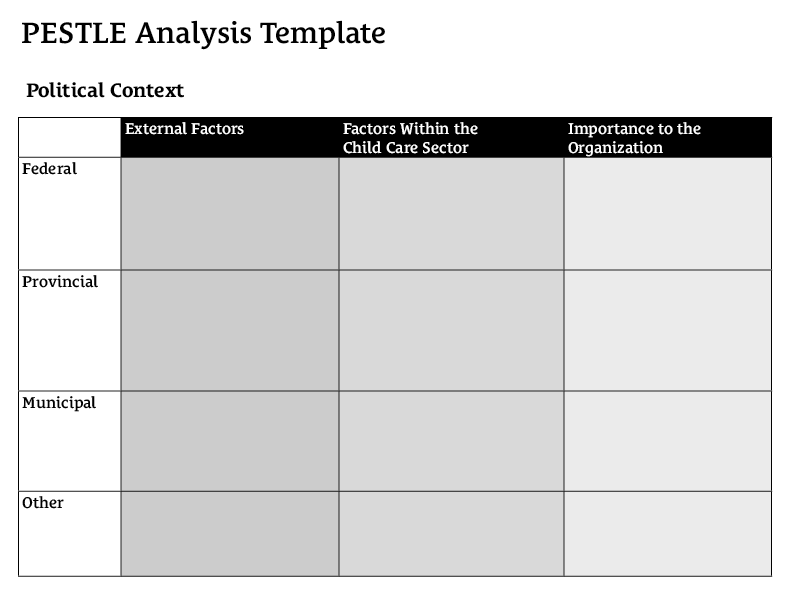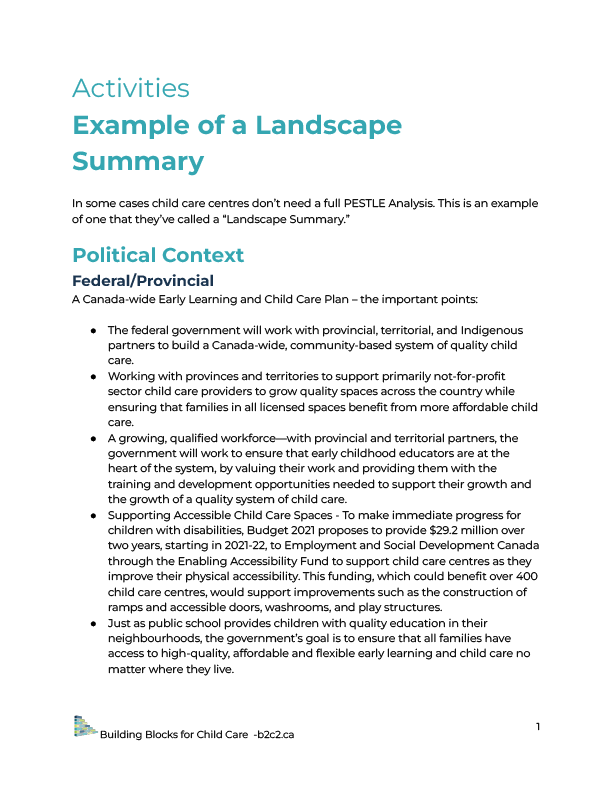Knowing the environment you are working in and the direction of potential shifts will help you understand potential risks associated with your expansion project. Your information gathering should identify both internal and external factors that influence your organization or a particular project. Before writing a strategic plan you need to determine:
Demonstrating that your organization has well grounded financial practices and is financially ready to take on an expansion project is an important consideration for any current or potential funders.
In terms of financial stability – together with your Board ask yourself:
Part of the information gathering within your organization will include determining how an expansion project will be managed, including the role of the board and Executive Director/designate in decision making.
Some things to consider when determining how the project will be managed include:
The way that licensed child care in Canada is funded has dramatically shifted with the introduction of the Canada-wide Early Learning and Child Care (CWELCC) system. Each province and territory (excluding Quebec) have agreements and action plans in place for how CWELCC will be rolled out to the year 2026. Families will pay on average $10/day by 2026.
In Ontario, unlike other provinces and territories, the government designates local governments as the Service System Manager (SSM) for early years and child care services and flows funding to them, who then direct it to service providers.
The Ministry of Education has provided each SSM with “directed growth” targets as and targets for non-profit spaces created.
There are 47 SSM’s in Ontario who play a central role in the planning, funding, administration and operation within each of their service areas. They are required to engage in system-wide planning and setting strategic priorities for the coming years. How each SSM plans to meet their provincially directed growth targets and non-profit proportions will be embedded in their plans.
As a non-profit child care organization, your relationship with the SSM is of utmost importance. Not only are they your key funder, they also decide if you will get CWELCC funding or any other available funding for any kind of expansion. Therefore the information included in their service system plan and alignment with your organization’s concept will be key to your decision about your expansion plans.
A PESTLE analysis studies the key external factors (Political, Economic, Sociological, Technological, Legal and Environmental) that influence an organisation.

A PESTLE analysis studies the key external factors (Political, Economic, Sociological, Technological, Legal and Environmental) that influence an organisation.

In some cases child care centres don’t need a full PESTLE Analysis. This is an example of the types and level of information used before briefing the board of directors and creating a strategic plan.
Find out about child care expansion news, how B2C2 can help you, and everything about child care expansion in Ontario.